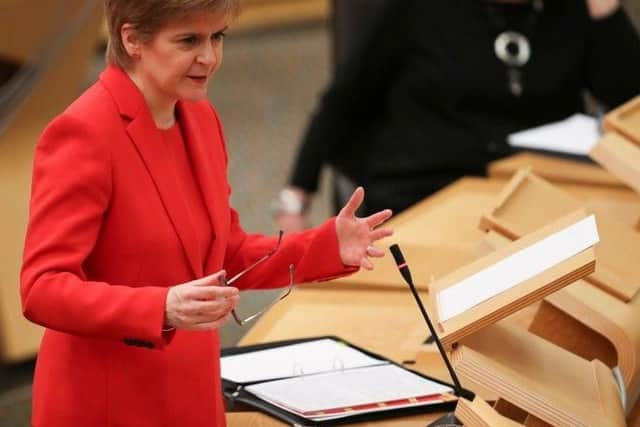Scotland level 3: what are tier 3 restrictions in Scotland - and when will the country move to a level system?
Nicola Sturgeon set out Scotland’s route map out of lockdown on 23 February, earmarking dates for when parts of society may reopen.
Addressing the Scottish Parliament, the First Minister confirmed that if all goes according to plan, the country will move back to a levels system from the last week in April.
Advertisement
Hide AdAdvertisement
Hide AdAt this stage, all parts of the country currently in level 4 - which includes the whole of mainland Scotland - will be able to move initially to level three.


But what does level three of Scotland’s tiered system mean?
Why is Scotland returning to a levels system?
According to Sturgeon, the advantage of the levels system is that it allows the government to open up parts of the country that have lower infection rates first.
She said this will depend on the vaccination programme going as planned.
Sturgeon said: “The advantages of the levels system is that it will allow us to let some parts of the country move faster than others, if the data supports that.
“Moving back to the variable levels system at that time will also be contingent on us having vaccinated all JCVI priority groups 1-9 which we hope to have done by mid April.
“That matters not only because those groups will be more protected but also because we believe that vaccinating around half of the population will have a significant effect on reducing transmission across society as a whole.
“And though we don’t yet know exactly how big an effect this will be, we hope it will give us the headroom to carefully ease restrictions.”
When will mainland Scotland move to level three and below?
Nicola Sturgeon expects all parts of Scotland currently in level four to return to level three by 26 April.
Advertisement
Hide AdAdvertisement
Hide AdAfter this, areas will move to levels “dependent on incidence and prevalence of the virus at that time.”
The First Minister confirmed that the lockdown route map will be reviewed every three weeks, so it’s expected that level three restrictions will be reviewed again in mid-May.
Sturgeon said: “It is important to stress, of course, that all of this depends on us continuing to suppress the virus now - and continuing to accept some trade-offs for a period… However, if we do so, I am optimistic that we can make good progress in returning more normality to our lives and the economy.”
What are the level three rules?
While level three rules were set out in the previous tiered lockdown, Sturgeon confirmed the system will be introduced “possibly with some revisions to the content of the levels”.
While nothing has been confirmed yet what level three may look like in 2021, the existing rules in place for level three are as follows:
Under level three restrictions no in-home socialising is permitted, while meetings in public and outdoor settings are restricted to groups of six from no more than two households.
The sale of alcohol is not permitted in indoor or outdoor hospitality settings, though the sale of food will be permitted. All hospitality settings are required to close at 6pm.
Takeaways will be permitted for alcohol and food “as per existing arrangements”.
Advertisement
Hide AdAdvertisement
Hide AdLevel three restrictions do not permit non-essential travel into or out of the level 3 area with exemptions for “work, education, shopping health etc; outdoor exercise; weddings and funerals; and transit through restricted areas”.
Active travel (walk, run, cycle, wheel) is encouraged where possible, while car sharing is advised against along with non-essential use of public transport.
Public services and support services are both permitted to operate, but are encouraged to operate online where possible.
Close contact services such as hairdressers and barbers will be allowed to operate in level three but may be subject to additional protective measures. Mobile close contact services are not permitted.
Weddings, and civil partnerships and funerals are all subject to 20 person limits.
Indoor individual exercise is permitted, while all outdoor exercise, apart for adult contact, is permitted.